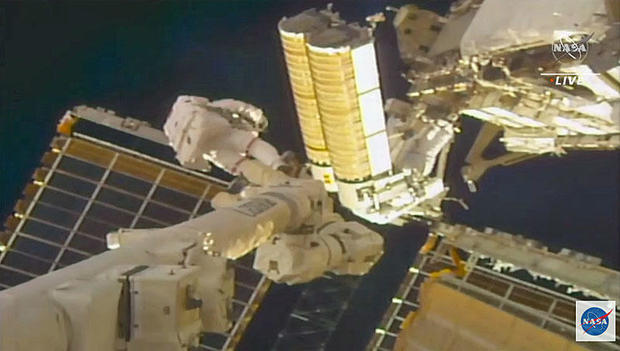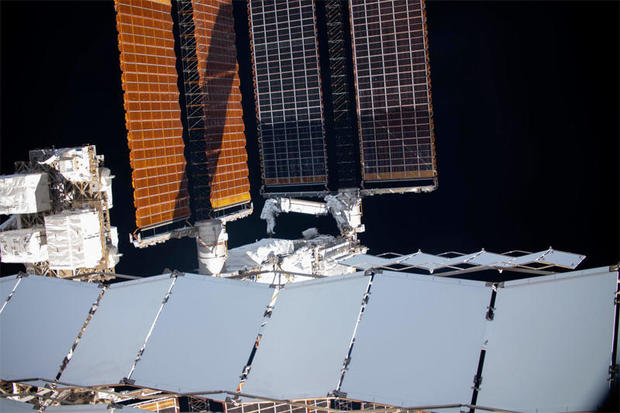Watch Live: Spacewalk to wrap up second solar array installation at space station
French astronaut Thomas Pesquet and NASA crewmate Shane Kimbrough floated back outside the International Space Station Friday to install the second of six roll-out solar arrays in a major upgrade to offset age-related degradation in the lab's existing solar wings.
As with all NASA spacewalks, the excursion began when Pesquet and Kimbrough, floating in the station's Quest airlock, switched their spacesuits to battery power at 7:52 a.m. EDT. It is the ninth spacewalk for Kimbrough, the fifth for Pesqut and the 241st in the 23-year history of the space station.
For identification, Pesquet, call sign EV-1, is wearing a suit with red stripes while Kimbrough, EV-2, is wearing an unmarked suit. Both men are equipped with high-definition helmet cameras.
The first two ISS roll-out solar arrays, or iROSAs, were delivered to the lab complex aboard a SpaceX Dragon cargo ship on June 5. The astronauts originally planned to install them in a pair of spacewalks, but it took two outings, one on June 16 and another on June 20, to get the first new array installed.
That panel was mounted on a fixture at the base of an existing solar wing on the far left, port 6 segment of the station's power truss. The P6 truss segment supports two wings, feeding electricity into two of the lab's eight major power circuits: 2B and 4B.
The first iROSA was mounted on a fixture at the base of the P6/2B array, extending out 60 feet and tilted away from the original wing by 10 degrees. The second iROSA will be attached in similar fashion to the P6/4B wing.
As the name suggests, the new panels are designed to deploy from spools, unrolling on their own when tightly wound carbon composite support struts on either side are released.
NASA plans to install iROSA panels on six of the space station's eight original solar wings, all of which have suffered age-related degradation, including rocket plume deposits from visiting cargo and crew ships and impacts from micrometeoroids.
Each new iROSA blanket will generate 20 kilowatts of power and, acting in concert with the original arrays, boost power output back to factory fresh levels.
Pesquet tweeted a time-lapse video of first iROSA installation that was shot by Japanese astronaut Akihiko Hoshide, showing the spacewalkers working in orbital daylight and darkness as the station's other original arrays tracked the sun:
"So the new arrays are installed on top, over in front of the existing solar arrays," said Dana Weigel, deputy manager of the space station program at the Johnson Space Center. "The exposed portion of the old arrays will still be generating power in parallel with the new arrays.
"Those new iROSA arrays have solar cells on them that are more efficient than our original cells, they have a higher energy density, and together in combination, they generate more power than what our original array, when it was new, did on its own."
The six roll-out arrays will generate a combined 120 kilowatts of power. Combined with 95 kilowatts generated by the unshaded portions of the original arrays, the station's total solar power output will reach 215 kilowatts when the upgrade is complete.

